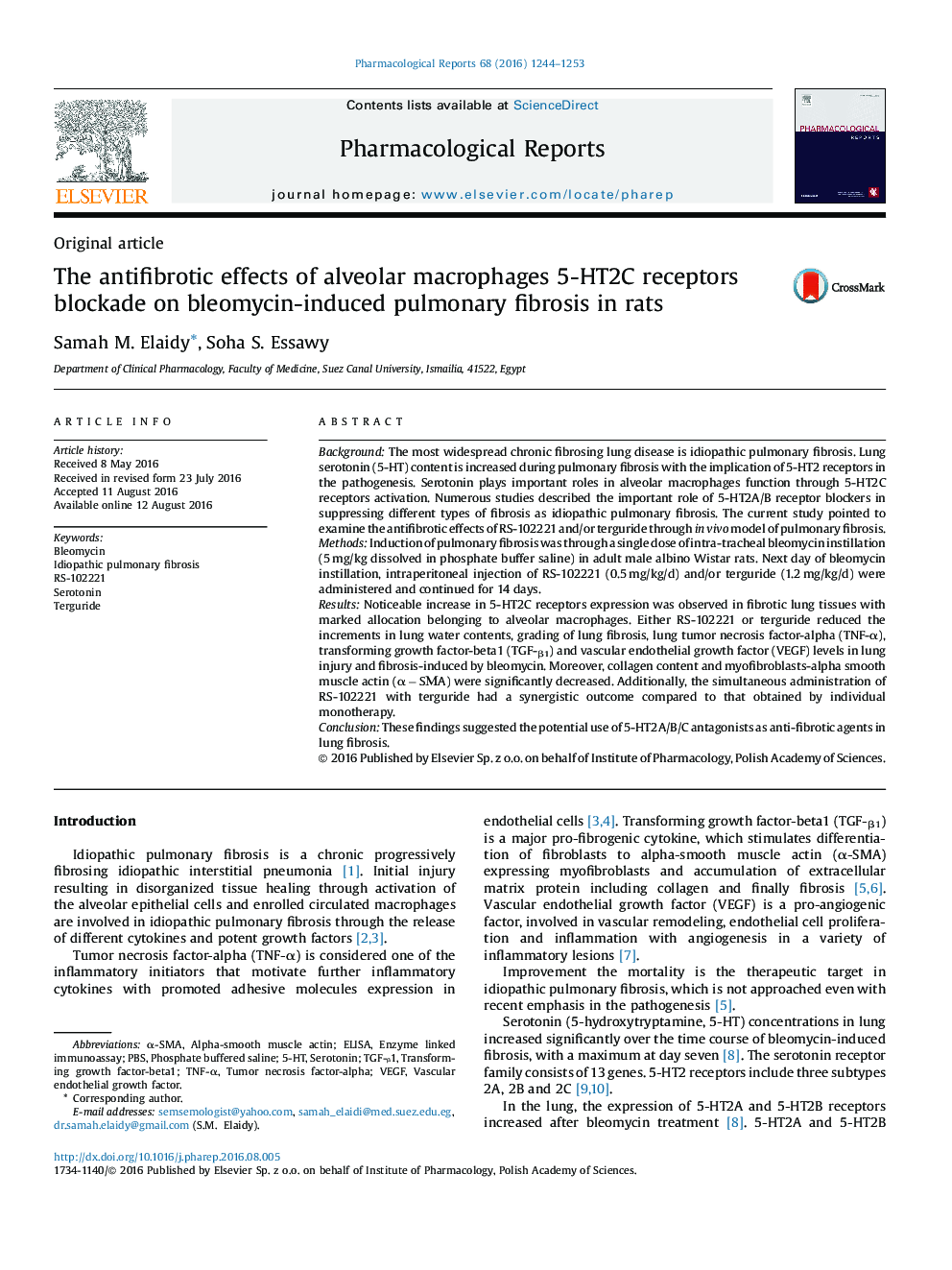| Article ID | Journal | Published Year | Pages | File Type |
|---|---|---|---|---|
| 6481722 | Pharmacological Reports | 2016 | 10 Pages |
BackgroundThe most widespread chronic fibrosing lung disease is idiopathic pulmonary fibrosis. Lung serotonin (5-HT) content is increased during pulmonary fibrosis with the implication of 5-HT2 receptors in the pathogenesis. Serotonin plays important roles in alveolar macrophages function through 5-HT2C receptors activation. Numerous studies described the important role of 5-HT2A/B receptor blockers in suppressing different types of fibrosis as idiopathic pulmonary fibrosis. The current study pointed to examine the antifibrotic effects of RS-102221 and/or terguride through in vivo model of pulmonary fibrosis.MethodsInduction of pulmonary fibrosis was through a single dose of intra-tracheal bleomycin instillation (5 mg/kg dissolved in phosphate buffer saline) in adult male albino Wistar rats. Next day of bleomycin instillation, intraperitoneal injection of RS-102221 (0.5 mg/kg/d) and/or terguride (1.2 mg/kg/d) were administered and continued for 14 days.ResultsNoticeable increase in 5-HT2C receptors expression was observed in fibrotic lung tissues with marked allocation belonging to alveolar macrophages. Either RS-102221 or terguride reduced the increments in lung water contents, grading of lung fibrosis, lung tumor necrosis factor-alpha (TNF-α), transforming growth factor-beta1 (TGF-β1) and vascular endothelial growth factor (VEGF) levels in lung injury and fibrosis-induced by bleomycin. Moreover, collagen content and myofibroblasts-alpha smooth muscle actin (α â SÐA) were significantly decreased. Additionally, the simultaneous administration of RS-102221 with terguride had a synergistic outcome compared to that obtained by individual monotherapy.ConclusionThese findings suggested the potential use of 5-HT2A/B/C antagonists as anti-fibrotic agents in lung fibrosis.
